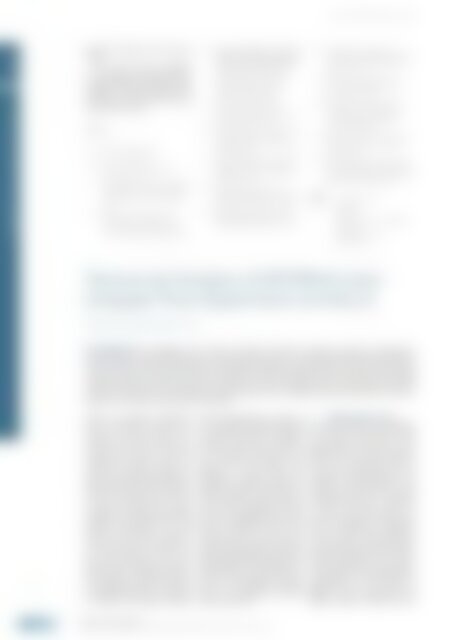atw 2018-04v6
Create successful ePaper yourself
Turn your PDF publications into a flip-book with our unique Google optimized e-Paper software.
<strong>atw</strong> Vol. 63 (<strong>2018</strong>) | Issue 4 ı April<br />
OPERATION AND NEW BUILD 226<br />
European Structural and Investment<br />
Funds.<br />
This work has been supported<br />
by the Project CZ.02.1.01/0.0/0.0/<br />
15_008/0000293: Sustainable energy<br />
(SUSEN) – 2 nd phase realized in the<br />
framework of the European Structural<br />
and Investment Funds.<br />
References<br />
[1] CVR Annual Report 2016.<br />
[2] http://susen2020.cz/<br />
[3] http://cvrez.cz/en/infrastructure/<br />
research-reactor-lvr-15<br />
[4] IAEA, Standards Safety in the Utilization<br />
and Modification of Research Reactors”,<br />
Safety Standard n° SSG-24, VIENNA,<br />
2012.<br />
[5] ATHLET 3.1A, 2016 User manual:<br />
ATHLET Mod 3.1 Cycle a, G. Lerchl,<br />
H. Austregesilo, P. Schoffel, D. von<br />
der Cron, F. Weyermann, March 2016.<br />
[6] Heat Transfer Behaviour and Thermohydraulics<br />
Code Testing for Supercritical<br />
Water Cooled Reactors (SCWRs),<br />
IAEA. http://www-pub.iaea.org/<br />
books/IAEABooks/10731/Heat-<br />
Transfer-Behaviour-and-Thermo-<br />
hydraulics-Code-Testing-for-<br />
Supercritical-Water-Cooled-R<br />
[7] TRACE V5.840 Theory Manual,<br />
U.S. Nuclear Regulatory Commission,<br />
Washington DC, March 2013.<br />
[8] TRACE V5.840 User’s Manual, Volume 1:<br />
Input Specification, U.S. Nuclear<br />
Regulatory Commission, Washington<br />
DC, February 2014.<br />
[9] TRACE V5.840 User’s Manual, Volume 2:<br />
Modelling Guidelines, U.S. Nuclear<br />
Regulatory Commission, Washington<br />
DC, February 2014.<br />
[10] G. Mazzini et al., ATHLET 3.1A<br />
SIMULATION CAPABILITIES FOR SUPER-<br />
CRITICAL STATE, CVR 1581, 1.1.2017.<br />
[11] G. Mazzini et al., ATHLET 3.1A HEAT<br />
TRANSFER ASSESMENT FOR SUPER-<br />
CRITICAL WATER, CVR 1582, 1.1.2017.<br />
[12] G. Mazzini et al., ATHLET 3.1A<br />
CAPABILITIES IN SIMULATING SWAMUP<br />
FACILITY IN SCW CONDITIONS, CVR<br />
1583, 1.1.2017.<br />
[13] M. Polidori, HE-FUS3 Benchmark<br />
Specifications, GoFastR-DEL-1.5-01,<br />
Rev. 0, ENEA, July 2011.<br />
[14] M. Polidori, HE-FUS3 Experimental<br />
Campaign for the Assessment of<br />
Thermal-Hydraulic Codes: Pre-Test<br />
Analysis and Test Specifications,<br />
Report RSE/2009/88.<br />
[15] M. Polidori et al, HE-FUS3 Benchmark<br />
Results, GoFastR-DEL-1.5-6, Rev. 0,<br />
November 2012.<br />
[16] Miloš Kynčl, Development and Assessment<br />
of TRACE HTHL-2 Facility Thermal<br />
Hydraulic Model, Internal Project Status<br />
Report, CVŘ 1334, March 2017.<br />
Authors<br />
G. MazziniM. Kyncl<br />
Alis Musa<br />
M. Ruscak<br />
Centrum Vyzkumu Rez (CVŘRez)<br />
Hlavní 130<br />
250 68 Husinec – Řež,<br />
Czech Republic<br />
Numerical Analysis of MYRRHA Interwrapper<br />
Flow Experiment at KALLA<br />
Abdalla Batta and Andreas G. Class<br />
Introduction The MYRRHA reactor, which is developed at SCK-SCN in Belgium, represents a multi-purpose<br />
irradiation facility. Its prominent feature is a pool design with the nuclear core submerged in liquid metal lead bismuth.<br />
During transients between normal operation and accident conditions decay heat removal is ensured by forced and<br />
natural convection, respectively. The flow in the gap between the fuel assemblies plays an important role in limiting<br />
maximum temperatures which should not be exceeded to avoid core damage. The term inter-wrapper flow (IWF)<br />
describes the convection in the small gap between the wrapper tubes of neighbouring fuel assemblies (FAs). It plays an<br />
important role for passive decay heat removal (DHR).<br />
Based on numerous experiments<br />
several correlations have been proposed<br />
for the flow within wirewrapped<br />
rod bundles. However, for<br />
the flow within the gap between<br />
neighbouring bundles only few<br />
studies are reported. Recently [1]<br />
reviewed the existing correlations by<br />
Rheme [2], Baxi & Dalle Donne [3]<br />
Cheng and Tordreras [4], and Kirillov<br />
[5] for the pressure-drop in wirewrapped<br />
rod bundles. The existing<br />
correlations were compared to all the<br />
available experimental data and<br />
showed that agreement of approximately<br />
±20 % can be expected. For<br />
the inter-wrapper flow within the<br />
gap only few studies exist, see [6].<br />
Due to the scarce database, within the<br />
Horizon 2020 – research and innovation<br />
framework program of the EU,<br />
the SESAME project was established<br />
to develop and validate advanced<br />
numerical approaches, to achieve a<br />
new or extended validation base and<br />
to establish best practice guidelines<br />
including verification & validation<br />
and uncertainty quantification, see<br />
[7]. In particular the current work<br />
supports the inter-wrapper flow<br />
experiment at KALLA. Three fuel<br />
assemblies including the gap flow are<br />
studied covering the full range of<br />
thermo- hydraulic conditions expected<br />
in the reactor application. For this<br />
purpose, an experimental test matrix<br />
has been established which covers<br />
relevant scenarios. The aim of our<br />
numerical pre-test study is to help the<br />
design of the experiment. The current<br />
study applied RANS-CFD methods for<br />
design support of the experiment. In<br />
the body of this compact the experiment,<br />
the corresponding numerical<br />
model, and preliminary numerical<br />
results are provided.<br />
1 Experimental setup<br />
The KALLA experiment investigates<br />
IWF between three bundles which<br />
are thermally connected by a gap.<br />
Figure 1 shows a cross-sectional view<br />
of the test section which consists of<br />
three ducts representing the fuel<br />
assemblies. Each duct contains 7 wirewrapped<br />
electrically-heated pins<br />
representing the fuel rods. The gap<br />
between the channels, i.e. assemblies,<br />
is filled with liquid metal, so<br />
that strong thermal coupling exists<br />
between neighbouring assemblies.<br />
The test matrix covers independent<br />
variation of flow and thermal conditions<br />
in both the gap and the bundles.<br />
Detailed description of the experiment<br />
is reported in [8]. The geometrical<br />
parameters of the bundle and the<br />
nomenclature are also shown in<br />
Figure 1. The experimental loop<br />
facility THESYS at KALLA and the<br />
Operation and New Build<br />
Numerical Analysis of MYRRHA Inter- wrapper Flow Experiment at KALLA ı Abdalla Batta and Andreas G. Class

















